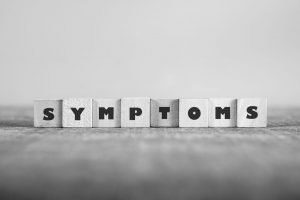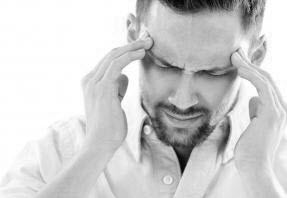Table of Contents
Introduction
 Clinical confirmation is a method used to refine the materia medica by observing which symptoms disappear after administering a homeopathic remedy to patients. This practice, also known as ‘clinical confirmation’, helps to confirm and add both known and new symptoms to the materia medica. It is important that the effects of the remedy are demonstrably caused by the remedy itself, without interference from other treatments. Symptoms must disappear repeatedly and for a long period to be reliably considered as belonging to the remedy. This method is also used to identify the ‘keynotes’, characteristic symptoms of a remedy.
Clinical confirmation is a method used to refine the materia medica by observing which symptoms disappear after administering a homeopathic remedy to patients. This practice, also known as ‘clinical confirmation’, helps to confirm and add both known and new symptoms to the materia medica. It is important that the effects of the remedy are demonstrably caused by the remedy itself, without interference from other treatments. Symptoms must disappear repeatedly and for a long period to be reliably considered as belonging to the remedy. This method is also used to identify the ‘keynotes’, characteristic symptoms of a remedy.
Clinical confirmation as a supplement to the materia medica
As you can read in the article about remedy proving, there are two ways to determine which symptoms belong to a specific remedy. This can be done through a remedy proving (voluntary intake of a non-toxic dose) or by looking at poisoning (involuntary intake of a toxic dose). These are essentially ways that are conducted before a treatment takes place or can take place.
However, it is also possible to confirm, refine, and supplement the materia medica by treating patients. This is referred to as ‘clinical confirmation’. ‘Clinical’ refers to ‘in practice’, meaning through treating patients, while ‘confirmation’ refers to confirming the symptoms that belong to a remedy.
In clinical confirmation, the focus is on the symptoms that disappear after administering a specific remedy. The premise is that a homeopathic remedy positively influences a patient’s health, causing symptoms to disappear. You can read more about this in the article on health and disease and symptoms.
The idea of clinical confirmation helps to achieve the following:
Confirm symptoms that arise during remedy proving and/or poisoning, confirming that they actually belong to a specific remedy. These are symptoms that were present in the patient and are already described in the materia medica of a specific remedy.
Supplement symptoms that were not previously known through remedy proving or poisoning. These are symptoms that were present in the patient but are not yet described in the materia medica of a specific remedy.
 Perhaps an example will help clarify this idea. Suppose a patient suffers from various symptoms: headaches that are usually worse around 10:00 AM, headaches that feel like hammers hitting the head, these headaches started after the divorce, the patient suffers from insomnia between 2:00 and 3:00 AM. Suppose all these complaints, except the last one, match a specific remedy that is prescribed for that reason. If the patient returns to discuss the effect of the remedy and reports that all complaints have disappeared, including the inability to sleep, then we could, if certain conditions are met, note that the insomnia might also be related to the prescribed remedy. It goes without saying that this is not done lightly and will be discussed in the next paragraph.
Perhaps an example will help clarify this idea. Suppose a patient suffers from various symptoms: headaches that are usually worse around 10:00 AM, headaches that feel like hammers hitting the head, these headaches started after the divorce, the patient suffers from insomnia between 2:00 and 3:00 AM. Suppose all these complaints, except the last one, match a specific remedy that is prescribed for that reason. If the patient returns to discuss the effect of the remedy and reports that all complaints have disappeared, including the inability to sleep, then we could, if certain conditions are met, note that the insomnia might also be related to the prescribed remedy. It goes without saying that this is not done lightly and will be discussed in the next paragraph.
Keynotes
Clinical confirmation also plays a significant role in determining what is called a keynote of a remedy. A keynote is essentially a symptom that is very characteristic of a specific remedy. In the article ‘What is a Keynote According to Classical Homeopathy?’ we delve deeper into this concept.
Conditions for clinical confirmation
We do not simply attribute all complaints that disappear after prescribing a remedy to that particular remedy. Certain criteria must be met to increase reliability:
- Effect must be caused by the remedy: This seems obvious but it is important to mention. If a symptom disappears for reasons other than the remedy, it cannot be included in the materia medica through clinical confirmation. In the earlier example, this could be because the patient, in addition to the homeopathic remedy, also did something else to address the sleep problems, such as relaxation exercises, calming teas, or even taking sleep medication. If a patient starts two interventions simultaneously, it becomes difficult to see an improvement as clinical confirmation. It could also be that a complaint naturally goes away and not due to a treatment, known as regression to the mean.
- No use of multiple remedies: If multiple remedies are given relatively shortly after each other, clinical confirmation cannot be used. For example, if a patient receives remedy A after the consultation but also takes remedy B after a few days, it is no longer possible to use the disappearing complaints as clinical confirmation. The question is whether the disappearance of the complaints was caused by remedy A or B. Typically, in classical homeopathy, different remedies are not given without an interim evaluation, but some homeopaths do such as in the system of Disease Classification.
- Symptoms must disappear: Some homeopaths believe that all symptoms belonging to the totality can be seen as clinical confirmation if the remedy has worked. This is unfortunately incorrect. It is possible that a particular symptom is present in a patient but only disappears with another remedy. Some patients need two or more remedies during the entire treatment. In the earlier example, it could be that the patient returns over time and reports that the headaches have disappeared or at least diminished, but the insomnia still plays a role. In that case, the insomnia between 2:00 and 3:00 AM cannot be seen as clinical confirmation, even though the remedy had a positive effect on the patient’s health.
- Symptom must be reported multiple times: To be sure it is not a coincidence, clinical confirmation must occur multiple times. The more often, the better. If a complaint disappears in a patient after taking a specific remedy, the chance that the two are related is smaller. But if a particular symptom has disappeared in a hundred different patients after taking that specific remedy, the chance is quite high that the two are related.
- Symptom must disappear for a long period: A symptom must disappear for a longer period to be linked to the remedy. In the earlier example, it could be that the patient sleeps much better for a week after taking the remedy. But a week is very short to draw concrete conclusions. It is possible that the patient has good periods more often, and it now coincides with taking the remedy. The longer a symptom disappears, the better it is.
In short, we must be very careful in attributing all complaints that occur during treatment to the effect of a homeopathic remedy.
A case example
 The concept of clinical confirmation can be illustrated with an actual treated patient. During a consultation, it appeared that a young boy absolutely could not stand water. If he realized he had to take a bath or shower, or got wet in any way, he would panic and cry. The parents had tried various things, but washing always involved much distress and problems. This complaint had existed for several months. A rubric in the repertory that could fit this symptom is MIND – FEAR – water, of.
The concept of clinical confirmation can be illustrated with an actual treated patient. During a consultation, it appeared that a young boy absolutely could not stand water. If he realized he had to take a bath or shower, or got wet in any way, he would panic and cry. The parents had tried various things, but washing always involved much distress and problems. This complaint had existed for several months. A rubric in the repertory that could fit this symptom is MIND – FEAR – water, of.
In addition to this main complaint, the patient also had other complaints. The boy showed a great fascination for details, hated being dirty, and displayed very stubborn behavior. Physically, the boy had more problems with constipation after drinking even a little milk. He already suffered from constipation, but milk worsened it. He also sweated excessively on his head. If his eyes were exposed to wind or draft, he would want to keep his hands over his eyes to protect them.
The prescribed remedy was not listed in the rubric MIND – FEAR – water, of, and as far as known, nothing about hydrophobia is mentioned in the materia medica of the prescribed remedy.
Nevertheless, during the follow-up consultation a month later, the fear of water had significantly improved. He had taken a bath several times without panic and distress, although he was sometimes still a bit alert. Previously, bathing or showering was problematic ten out of ten times, now it was five out of ten times problem-free. His reaction to dairy was less severe, and he began to enjoy more foods. There was more progress, bowel movements were 25-50% better, and the sweating decreased. The fascination with details remained the same according to the mother, but he seemed a bit more audacious.
Since the fear of water decreased, it could be noted in the prescribed remedy. Based on one patient, it is not very convincing that hydrophobia belongs to the prescribed remedy, but by analyzing many cases, a clearer picture of a remedy can be obtained.
The ‘ideal’ materia medica
If we combine all sources, we get a kind of ideal materia medica. Information is collected reliably about the symptoms that match a specific remedy. Each homeopathic remedy has a unique set of symptoms that emerge through remedy proving, poisoning, and clinical confirmation. Each of these concepts adds different information to complete the picture of a remedy. Graphically, we can represent the ideal materia medica as follows:

Clinical confirmation and training to become a classical homeopath
Since prescribing a homeopathic remedy is the foundation of classical homeopathy, it is important that the information known about it is reliable, consistent, and understandable. We provide extensive advice on which books are most reliable and useful, the pitfalls, and what to avoid to become a successful homeopath. We ensure you have a sufficient understanding of the materia medica to confidently treat patients.
Also very important: in our training, we value two things highly. First, it is important to understand the materia medica rather than memorizing symptoms. We explain the main remedies in such a way that you learn to understand and apply them better without losing quality and reliability. We do this through interesting e-learning modules using video, text, audio, and graphics to place symptoms in the right context and indicate what is important and what is not. We also provide historical and medical background information to place each remedy in a broader context. You have ample time to study these modules. At the end of each module, we have created a test to see if you have understood the remedy well.
Second, in our training, you learn to know the remedies actively. Through cases and exercises where you are challenged to work actively with the remedies, you learn to know and apply the remedies in a playful way. Active learning ensures a better grasp of this complex subject matter.
We also ensure that during the training, you work on a document that will be very valuable and efficient in treating patients in your practice after your training.

